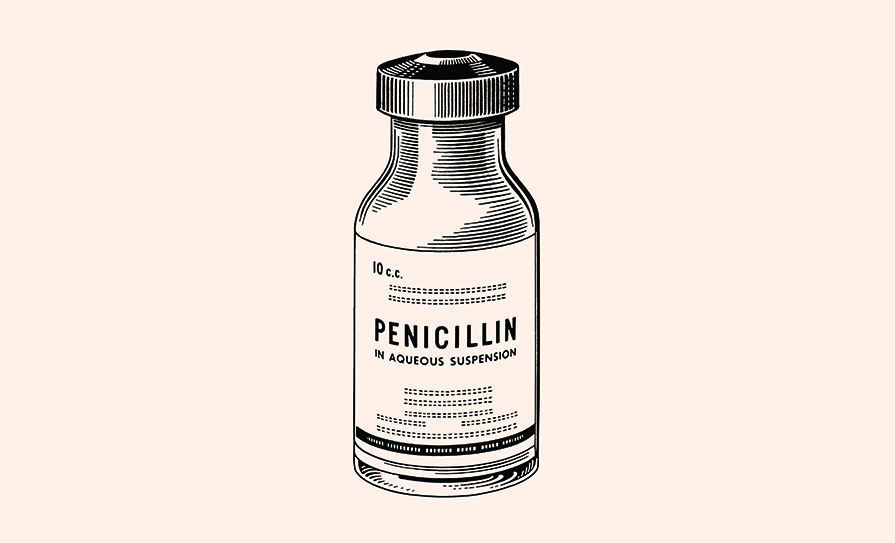The ‘Marmite effect’ is often used to describe a person or substance that polarises people — think Donald Trump, Jose Mourinho, Conor McGregor. Or the HSE.
But unlike all of the above, there’s one substance that according to recent research might actually have the ability to influence neurological processing — Marmite itself.
In what must have been manna from heaven for the folks in the Marmite marketing department, researchers at the University of York in the UK had study participants eat a teaspoon of the stuff each day for a month. The control group was given a teaspoon of peanut butter every day.
Remarkably, in the Marmite arm they observed via electroencephalography a 30 per cent reduction in the brain’s response to visual stimuli. They put this down to the vitamin B12 content in Marmite and its supposed ability to increase levels of the neurotransmitter GABA, which is linked to a range of neurological imbalance disorders.
Over to Dr Daniel Baker, Lecturer in the Department of Psychology at the University of York and lead author: “The high concentration of vitamin B12 in Marmite is likely to be the primary factor behind results showing a significant reduction in participants’ responsiveness to visual stimuli.
“Since we’ve found a connection between diet and specific brain processes involving GABA, this research paves the way for further studies looking into how diet could be used as a potential route to understanding this neurotransmitter.”
He sensibly adds: “Although GABA is involved in various diseases we can make no therapeutic recommendations based on these results, and individuals with a medical condition should always seek treatment from their GP.”
His first author Ms Anika Smith outlined the science: “These results suggest that dietary choices can affect the cortical processes of excitation and inhibition — consistent with increased levels of GABA — that are vital in maintaining a healthy brain.
“As the effects of Marmite consumption took around eight weeks to wear off after participants stopped the study, this suggests that dietary changes could potentially have long-term effects on brain function.
“This is a really promising first example of how dietary interventions can alter cortical processes, and a great starting point for exploring whether a more refined version of this technique could have some medical or therapeutic applications in the future.”
Marmite — you gotta love it. Or hate it. It all depends on whether it can qualify for reimbursement.
<div> <h3 class=”DORSALhead2MIstyles”>Heads or tails </h3> </div>
Occasionally, a lovely study surfaces that blurs the lines between the sublime and the ridiculous. This one provided many moments of voyeuristic pleasure over the Easter break and focused on the psychology behind how people eat their chocolate Easter bunnies — ears, mid-section or tail/feet first.
The study, published in <em>The Laryngoscope</em> and titled ‘Seasonality of Auricular Amputations in Rabbits’ — I kid you not — drew on a very respectable total of 28,113 participants and was conducted in annual peak bunny-eating seasons between 2012 and 2017.
In brief summary, 59 per cent ate the ears first, a rather boring 33 per cent said they had no preference where they started and only 4 per cent started with the tail or the feet.
“It was interesting to discover that few other confectionary symbols, such as Santa, succumb to isolated defects, like the chocolate bunnies do,” said lead author Dr Kathleen Yaremchuk with tongue firmly in cheek.
<div> <h3 class=”DORSALhead2MIstyles”>A pregnant pause</h3> </div>
How tolerant are you when it comes to irritating questions from patients? Even those with the most saintly disposition can grow fatigued by having to answer the same questions over and over again, but one obstetrician/gynaecologist decided to turn this into a little therapeutic light relief.
The obs-gynae doctor posted the following on Reddit recently, outlining some of the questions he’s most commonly asked — and the answers he would really like to provide.
<p class=”listBULLETLISTTEXTMIstyles”>‘Should I have a baby after 35?’ — <em>No, 35 children is enough</em>.<em></em>
<p class=”listBULLETLISTTEXTMIstyles”>‘What’s the most reliable method to determine the baby’s sex? <em>— Childbirth.</em>
<p class=”listBULLETLISTTEXTMIstyles”>‘My wife is five months’ pregnant and so moody that sometimes she’s borderline irrational.’ — <em>So what’s your question?</em>
<p class=”listBULLETLISTTEXTMIstyles”>‘My childbirth instructor says it’s not pain I’ll feel during labour, but pressure. Is she right?’ — <em>Yes, in the same way that a tornado might be described as an ‘air current’</em>.
<p class=”listBULLETLISTTEXTMIstyles”>‘When is the best time to get an epidural?’ — <em>Right after you find out you’re pregnant</em>.
<p class=”listBULLETLISTTEXTMIstyles”>‘Is there any reason I have to be in the delivery room while my wife is in labour?’ — <em>Not unless the word ‘alimony’ means anything to you</em>.
<p class=”listBULLETLISTTEXTMIstyles”>‘Is there anything I should avoid while recovering from childbirth?’ — <em>Yes, pregnancy</em>.
<p class=”listBULLETLISTTEXTMIstyles”>‘Do I have to have a baby shower?’ — <em>Not if you change the baby’s diaper very quickly</em>.
Our baby was born last week. When will my wife begin to feel and act normally again?’ — <em>When the kids are in college</em>.












Leave a Reply
You must be logged in to post a comment.